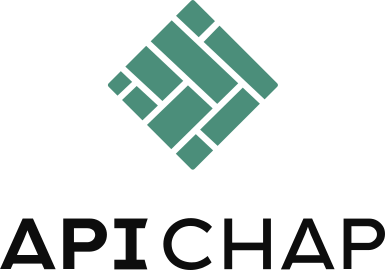When a backend application, including its API, is initially built and deployed on the server, it may seem that the software developer’s job is complete. The baton is then passed to the IT or DevOps department for ongoing server maintenance. Ideally, the system continues to function smoothly for weeks, months, or even years. However, in reality, every application will eventually require updates and API maintenance. These could be driven by the need to add new features, adapt to changes in third-party integrations, or address emerging issues.
Consider this: The E-Mail sending service used in the background of your application releases a new Software Development Kit (SDK). Or perhaps your company upgrades its internal Customer Relationship Management (CRM) system. If your backend application interfaces with these systems, it will require an update. The process, seemingly straightforward in theory, can quickly become complex.
A Quick Update Ends Up in Disaster
Sure, calling it a "disaster" might seem dramatic, but the term certainly grabs attention! And in many ways, it’s not far from the truth. A quick update can quickly become a complex and time-consuming ordeal. On paper, it might appear to be a minor adjustment, but as soon as the software developer retrieves the old code from the repository, a series of unforeseen issues often begin to emerge.
Take this common scenario: The new E-Mail sending SDK requires a minimum Java version that your application currently doesn’t support. To integrate this SDK, you start by updating to the new Java version. However, this upgrade could also necessitate updating your framework to its latest version, which might introduce new dependency issues. Each step in this chain reaction consumes more time and resources than initially anticipated. Hour after hour slips away, and what was estimated to be a “small” update transforms into a full-blown project.
Soon, the project is no longer running smoothly. It’s baffling for potential customers or stakeholders who see the application functioning perfectly on the server yet find it unrunnable after a seemingly minor update. This disconnect can lead to misunderstandings and undermine trust between the development team and the project stakeholders. This can strain relationships between the development team and the product owner side.
Actually in the software industry there is a term for not building or maintaining your software properly to save time or complete a task quicker: Technical Debt
Technical Debt
Technical debt is a concept in software development that refers to the future cost incurred due to choosing an easier, quicker solution now, instead of a more thorough, robust one. It's like taking shortcuts in your code, which might save time initially but will need to be addressed later, often at a much higher cost. This debt accumulates over time, leading to more complex and expensive fixes down the road. Now, apart from technical debt that is built during development, not maintaining your software applications will also pile up technical debt over time. Time and effort will be necessary sooner or later in order to keep your system running.
You could compare it to the real-life example of owning a car. Let's assume you skip the first year of service: “Everything is working perfectly fine, why should I spend money on service.”, you might think. However, what isn't visible yet is that the oil filter is starting to get a bit clogged. Replacing it now would be ideal, but since there are no immediate problems, you let it slide. Now let's skip the second year of service. Your car might begin to develop a few issues now and then, but they aren’t visible from the outside. Meanwhile, your oil filter is reaching the end of its lifespan. By the third year it is still running, but a pile of technical debt has accumulated. You now have multiple issues that need fixing all at once to keep your car in good condition.
And then, disaster strikes...
The oil filter is no longer filtering properly, causing significant engine damage. The once small and manageable issues have compounded into a major problem, costing you an enormous amount of money to repair.
Similarly, in software development, neglecting regular maintenance and updates leads to technical debt. Over time, minor issues that could have been easily fixed can escalate into major problems. Leading to extensive and costly repairs. Regular maintenance is crucial to avoid the pitfalls of technical debt, ensuring the smooth and efficient operation of your software in the long run.
Let's put a price on missing API maintenance
To better understand the financial impact of technical debt, let’s break down the costs with concrete numbers. Assume that the hourly rate for software development is €140. For a medium-sized backend application, a regular maintenance schedule might involve quarterly updates of frameworks and versions. Each quarterly update could take approximately 2 days or 16 hours. Over the course of a year, this equates to 64 hours, resulting in an annual maintenance cost of around €8,960. While this may seem like a significant expense, it's a proactive investment to avoid larger problems down the line.
Now, let’s consider a scenario where regular maintenance is neglected. After two years of no updates, a security incident occurs. One of the libraries used in your API has a security vulnerability that an attacker exploits, shutting down your entire system. The urgency of the situation means you need to immediately allocate developer resources, at potentially higher hourly rates. Additionally, you might require the expertise of security specialists, who are often quite expensive.
Here’s a breakdown on the potential costs of missing API maintenance:
Security Expert:
Two external experts ~ 40 hours each with an hourly rate of €210/hour will lead you with €16,800,-
Developer:
A team of four developers updating, securing and testing your application, 40h each with an hourly rate of €160/hour will lead you with €25,600,-
IT & Product Owner:
Having an incident such as a complete outage due to a security incident will likely also take around 4 people for 4d each in the IT department and product owners. Let's assume the costs of around €20.000,-
Downtime:
Four days of system downtime can lead to significant revenue loss, which can vary widely depending on the business, but in many cases, this can run into millions of euros.
Reputation Damage:
If sensitive data is stolen or the service disruption is public, the loss of trust can have long-term financial implications that are hard to quantify but are undoubtedly substantial.
Although all these numbers are just indications, having immediate costs of around €60.000,- is easily possible. But much worse is the money a downtime of the system would cost as well as the reputation damage to the customers. It's hard to put a number on it as it depends on the system, but we could easily run into the millions of euros.
Conclusion
Understanding the critical importance of regular system maintenance for your applications is essential. Ideally, you should have a support contract with a contractor or establish fixed upgrade cycles with your development team. Another possibility if you prefer not to dedicate significant effort to these maintenance tasks: Consider using APICHAP. Our platform is designed to help you not only build APIs to any data source within seconds but also to keep your system up-to-date without the need for you to perform application maintenance yourself.
What is API Maintenance?
API maintenance involves ongoing updates, monitoring, security checks, and documentation to ensure optimal performance and security. It’s essential for the longevity and reliability of your application. However, maintenance can be divided into two main areas: updating your running environment and servers, and maintaining the application itself. The first part is often managed by a dedicated IT or DevOps department, but the second part can only be handled by the developers. This aspect is often overlooked in planning and budgeting. This is where APICHAP can assist, by taking care of the application maintenance.
About APICHAP
At APICHAP, we are dedicated to not only helping you create APIs quickly but also ensuring that your system remains safe and efficient over time. Our platform offers a complete API lifecycle management service that keeps your system up-to-date and free of technical debt. With features such as auto-monitoring and self-repair, we guarantee that your system remains secure, saving you both time and money.
Instead of incurring significant expenses at irregular intervals for system maintenance, APICHAP offers a convenient monthly license fee. This fee covers all application updates and ongoing monitoring, ensuring your system is always running optimally. Additionally, updating your integrations or building new features is included in your monthly subscription, providing you with comprehensive support and continuous improvements without unexpected costs.
By choosing APICHAP, you can focus on your core business activities while we handle the complexities of API maintenance and updates, ensuring your applications are always performing at their best.
The Author
Dominik Rampelt CEO & Co-Founder @
APICHAPLinkedInBio: Dominik is a passionate Software Engineer with extensive experience in building hundreds of APIs throughout his professional career. Driven by a keen interest in new trends and emerging technologies, he continually seeks to bring innovative solutions to life, aiming to create more efficient and securely connected systems.





